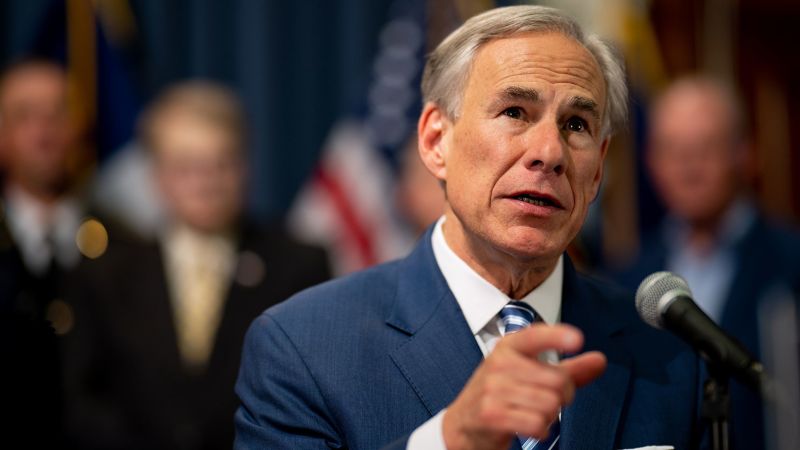A battle is quietly brewing between Texas Republican Gov. Greg Abbott and the Biden administration over the state’s deployment of razor wire at its border with neighboring New Mexico – its latest effort to curb illegal immigration on federal land without a permit.
The International Boundary and Water Commission, which administers the boundary and water treaties between the US and Mexico, told the Texas National Guard earlier this month that it is “encroaching on federal property” and that such activity could “lead to violations of federal laws, international agreements, and hydraulic issues within the flood plain” of the Rio Grande, according to an email first obtained by CNN.
According to the IBWC, an international body made up of a Mexican section and a US section headquartered in El Paso, Texas, the “encroachment” is on federal property in Texas that includes the floodplain of the Rio Grande, north of the US-Mexico border stopping just shy of the New Mexico state boundary line.
While the IBWC did not describe the “encroachment” as razor wire in its letter, New Mexico Democratic Rep. Gabe Vasquez told CNN his office was the first to speak with the IBWC and inform them that concertina wire had been installed on Texas’ side of the Rio Grande. It was installed, he said, “without the knowledge or approval of the IBWC, (his) office or local New Mexico officials.”
“This barrier is both unamerican and unconstitutional and needs to be removed immediately,” Vasquez, who toured the area on Monday, said in a statement.
The Rio Grande falls under multiple boundary and water treaties between the US and Mexico, and IBWC applies the rights and obligations assumed by the countries for the benefits of the people on both sides of the border. Those rights and obligations include the distribution of water and the preservation of the river. “All projects within the floodplain,” according to IBWC, “require close coordination with Mexico as part of an international treaty that effects water deflection during water flowing events.”
“I am kindly requesting that you immediately coordinate all your endeavors through this channel and refrain from any further activity that encroaches on federal property,” IBWC said in the October 11 email to the state of Texas.
Abbott confirmed deployment of a barrier last month during a speaking engagement in New York, when he said Texas was not only “building border barriers between the border of Texas and Mexico” but also building “border barriers between Texas and New Mexico.”
“Most of the people coming into the El Paso [Border Patrol] Sector, they don’t come to the United States through Texas, they come through New Mexico and then go over to El Paso,” Abbott claimed, without providing additional details.
CNN has reached out to Abbott’s office and New Mexico Gov. Michelle Lujan Grisham for comment.
Vasquez penned a letter to Abbott last week denouncing the construction of the border barrier between Texas and his home state and demanded its removal. “I call for the immediate removal of this barrier and urge you to work with Congress on real solutions to protect Americans,” he wrote.
IBWC’s email also asks the state of Texas to comply with seven requirements, including a “letter of application” requesting a permit and advises that all projects within the Rio Grande’s floodplain require close coordination with Mexico in compliance with international treaties. As of Tuesday, Texas had not complied with IBWC’s request, according to IBWC spokesperson Frank Fisher.
CNN has reached out to Mexico’s Foreign Ministry and the US Justice Department for comment. The Justice Department referred CNN to the Department of Homeland Security.
The border dispute is the latest quarrel between Texas and the Biden administration, at a time when increased migration is straining state and federal resources.
Abbott launched Operation Lone Star in March of 2021 to fight illegal immigration and has since deployed miles of border barriers along the Rio Grande between Texas and Mexico.
In July, the Justice Department sued Texas claiming it unlawfully installed border buoys on the Rio Grande, and asked a judge to force the state to remove them. While a district court judge ordered their removal last month, the 5th US Circuit Court of Appeals has allowed them to remain in place while it considers the case.
Read the full article here





